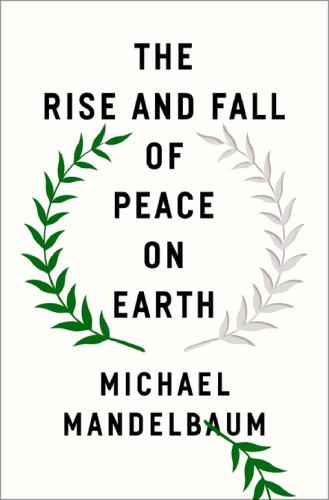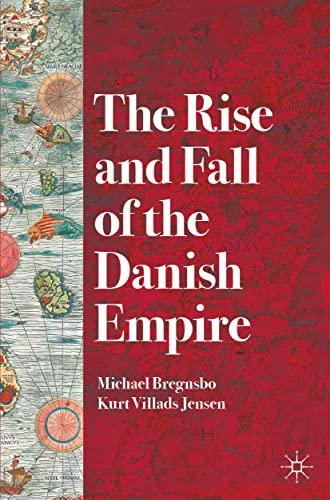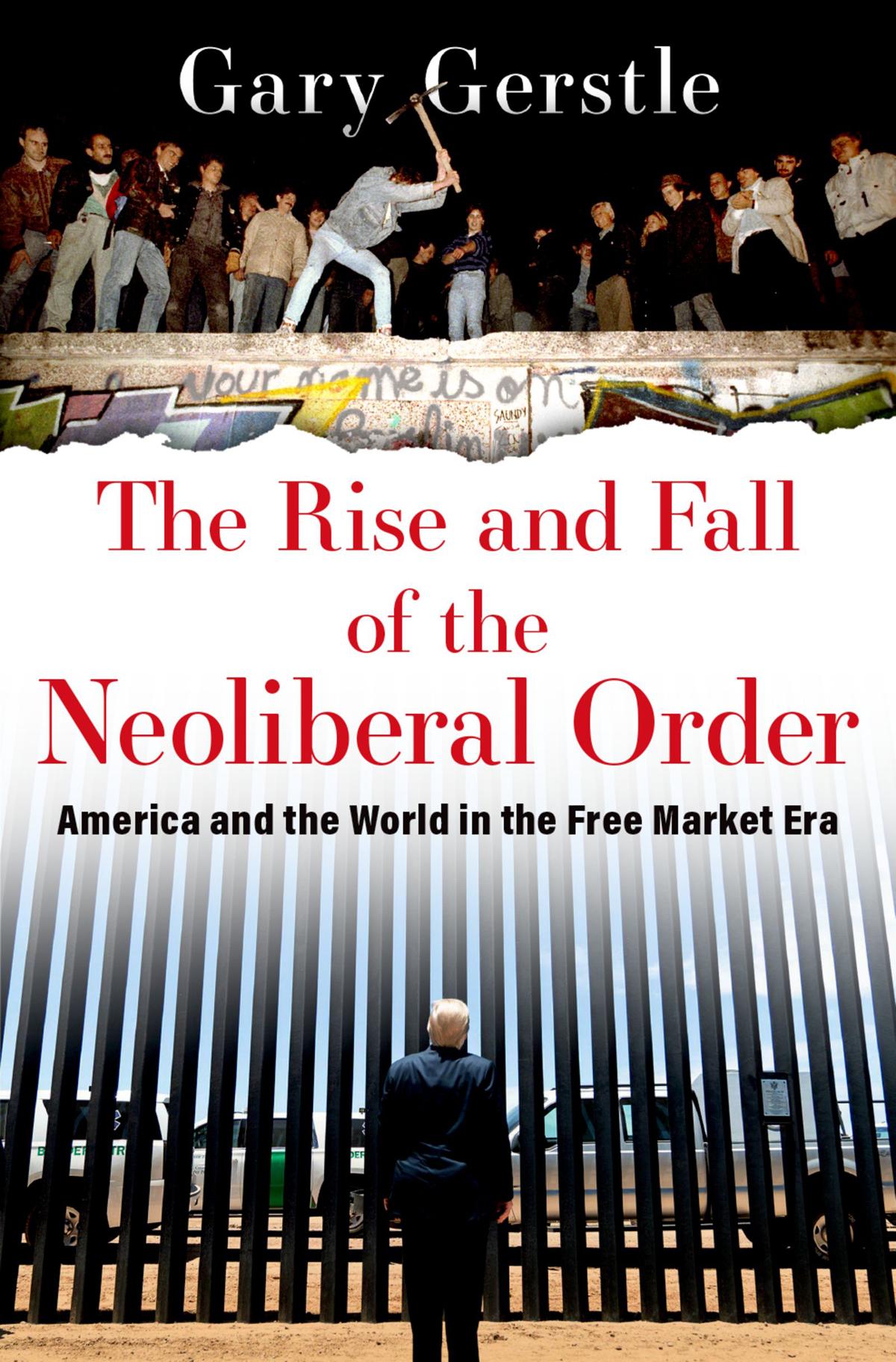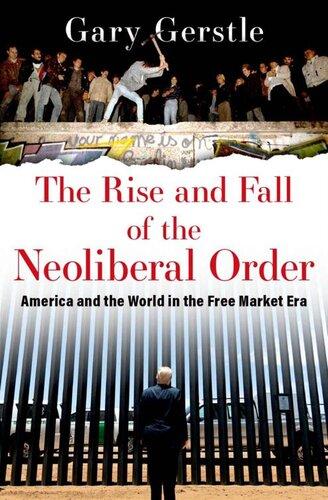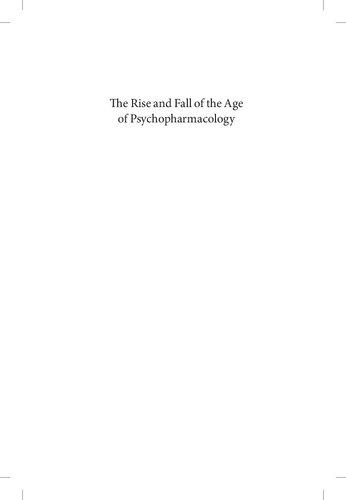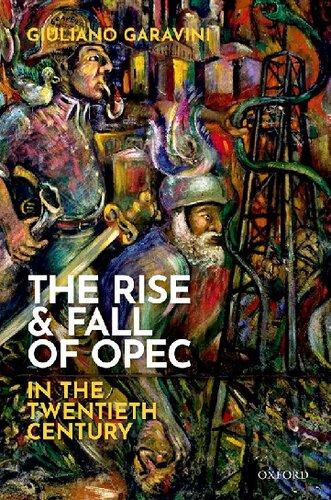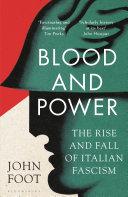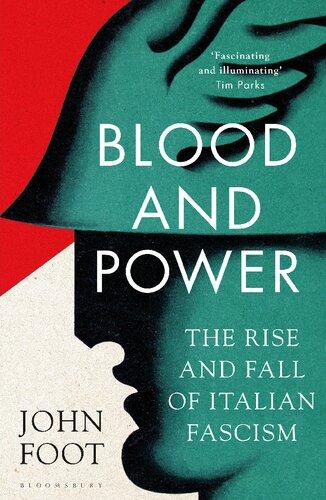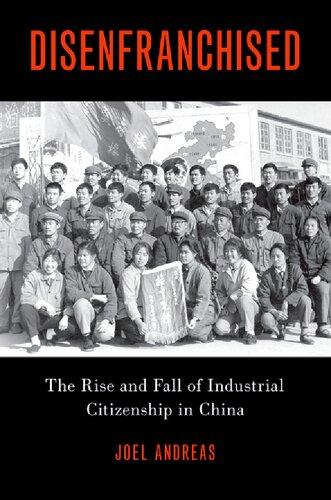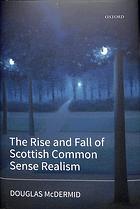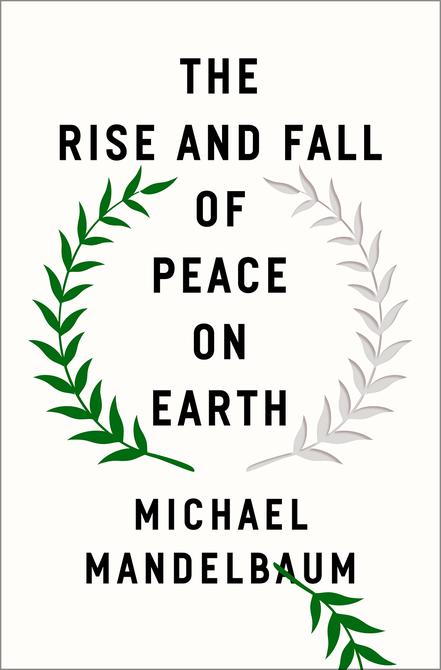T HE R ISE AND FALL OF P EACE ON E ARTH
M ICHAEL M ANDELBAUM
Oxford University Press is a department of the University of Oxford. It furthers the University’s objective of excellence in research, scholarship, and education by publishing worldwide. Oxford is a registered trade mark of Oxford University Press in the UK and certain other countries.
Published in the United States of America by Oxford University Press 198 Madison Avenue, New York, NY 10016, United States of America.
© Oxford University Press 2019
All rights reserved. No part of this publication may be reproduced, stored in a retrieval system, or transmitted, in any form or by any means, without the prior permission in writing of Oxford University Press, or as expressly permitted by law, by license, or under terms agreed with the appropriate reproduction rights organization. Inquiries concerning reproduction outside the scope of the above should be sent to the Rights Department, Oxford University Press, at the address above.
You must not circulate this work in any other form and you must impose this same condition on any acquirer.
Library of Congress Cataloging-in-Publication Data
Names: Mandelbaum, Michael, author.
Title: The rise and fall of peace on Earth / by Michael Mandelbaum.
Description: New York, NY : Oxford University Press, [2019]
Identifiers: LCCN 2018027496 | ISBN 9780190935931 (hc : alk. paper)
Subjects: LCSH: Peace—History—20th century. | Peace—History—21st century. | World politics—20th century. | World politics—21st century.
Classification: LCC JZ5554 .M36 2019 | DDC 303.6/6—dc23 LC record available at https://lccn.loc.gov/2018027496 1
Printed by Sheridan Books, Inc., United States of America
To Barbi Weinberg and in memory of Larry Weinberg, in appreciation for their many contributions to their community, their country, and the world.
War appears to be as old as mankind, but peace is a modern invention.
SIR HENRY MAINE
(1822–1888)
Be it thy course to busy giddy minds
With foreign quarrels. That action, hence borne out, May waste the memory of the former days.
WILLIAM SHAKESPEARE , Henry IV, Part Two
Acknowledgments ix Introduction xi
1. Europe: The Lost Peace 1
Peace 1
The Blunder 9
From Yeltsin to Putin 15
The End of Peace 23
The New/Old Europe 35
2. East Asia: The Commercial Peace 45 Peace 45
China’s Singularity 50
Chinese Revisionism 63
The Korean Conundrum 76
The New/Old Asia 85
3. The Middle East: The Hegemonic Truce 96 Truce 96
Iran 103
The Bomb 113
The Arab Spring 120
The New/Old Middle East 126
4. Peace Regained? 133
Accident or Precedent? 133
Perpetual Peace? 139
Universal Democracy? 147
Notes 157
Index 205
A C knowledgments
i am grateful to Ray Takeyh for a very useful discussion of Iran, to Thomas L. Friedman, James R. Kurth, and George Walden for stimulating conversations about the issues with which this book deals, to Charles Davidson, Adam Garfinkle, and Damir Marusic for the opportunity to explore some of the ideas that follow in The American Interest, to David McBride for welcoming the book to Oxford University Press, to Starr Lee for research assistance, and above all, and as always, to Anne Mandelbaum, for peerless editing, unwavering support, and endless love.
Introduction
The quarter century after the Cold War, from 1989 to 2014, included some noteworthy, historically important, much discussed, and in some cases widely celebrated events and trends: the fall of the Berlin Wall and the collapse of communism in Europe; the rise of China and rapid economic growth in Asia; the worldwide spread of free markets, a process known as globalization; the surge of terrorism around the world, most spectacularly in the attacks on New York and Washington DC on September 11, 2001; the uprisings across the Middle East initially called, with what turned out to be misplaced optimism, the Arab Spring; and the burst of innovation in information technology that produced the personal computer, the Internet, and the smartphone, all of which rapidly ensconced themselves in the lives of hundreds of millions of people and changed them and their daily, even hourly, habits more profoundly, in many cases, than any of the other features of that period.
From the perspective of the twenty-second century another development, hardly noticed much less fully appreciated, will seem as consequential if not more so: the reign of peace in the world. The quarter century of the post- Cold War era qualifies as the most peaceful in history.
The Rise and Fall of Peace on Earth examines that singularly peaceful quarter century. Its initial three chapters describe how and why peace came to be established in three important parts of the world: Europe (Chapter 1), where it was most firmly embedded; East Asia (Chapter 2),
which was more peaceful than at any other time in its modern history; and the Middle East (Chapter 3), the least peaceful of the three regions during those twenty-five years. These chapters also describe and explain how and why the unprecedentedly peaceful conditions in each of the three regions came to an end. The fourth and final chapter explores the prospects for the revival of peace in the future.
In what sense, the reader may well ask, can the quarter century following the fall of the Berlin Wall be regarded as uniquely peaceful? After all, inhabitants of the Balkans in southern Europe, the Congo in central Africa, and Syria in the Middle East died violently in large numbers. They died for the most part, however, because of civil war or the slaughter by governments or private militias of unprotected civilians, not as the result of the clash of the armed forces of the most powerful states, which is what makes historical periods the opposite of peaceful. Still, the great powers themselves have not, historically, fought one another unceasingly. What, therefore, distinguishes the post- Cold War era from periods when the strongest members of the international system were not engaged in open warfare?
The answer to that question may be found in perhaps the first and certainly one of the most famous descriptions of peace, from the prophet Isaiah in the Bible: “nation shall not lift up sword against nation, neither shall they learn war any more.” Historical eras when swords were not actively being used— periods lacking shooting wars— are common enough; but only in the post- Cold War era did many nations cease to “learn war”— that is, to anticipate war, to prepare for war, and to gear their foreign policies to the real possibility of imminent war.
Isaiah’s vision came to pass because of the presence of three features of the contemporary world that favor it: the geopolitical dominance of the United States; the growth of economic interdependence among almost all of the world’s nearly 200 sovereign states; and the spread of democracy throughout much of the planet.
The book’s first three chapters recount not only the establishment but also the demise of the post- Cold War peace. It came to an end in all three regions because one important country in each of them ended it through policies aimed at overturning the prevailing, peaceful, political, and military arrangements: Russia in Europe, China in East Asia, and Iran in the Middle East. They had a common motive: the
need to generate domestic political support, a need that had become urgent in the face of declining prospects for a formerly reliable source of such support— economic growth— and with the most reliable twenty-first-century wellspring of domestic legitimacy, democracy, unavailable to their dictatorial governments. Aggressive nationalism destroyed the post- Cold War peace in all three regions; and in Vladimir Putin’s Russia, in Xi Jinping and his Communist Party’s China, and in the Shia clerics’ Iran, aggressive nationalism stemmed at least in part from the domestic needs of autocratic regimes attempting to survive in a democratic age. Autocracy destroyed peace.
The book’s final chapter shows that the key to a return peace on Earth lies in the advent of genuine democracy, including both popular sovereignty—free elections— and the protection of religious, economic, and political liberty in Russia, China, and Iran. Alas, democracy cannot be imposed from the outside and there is no knowing when or indeed whether it will come to any of the three, let alone to all of them. The message of The Rise and Fall of Peace on Earth is thus both an optimistic and pessimistic one. Happily, the world has a formula for genuine peace; unhappily, the world has no way of ensuring that all countries embrace it.
Europe: The Lost Peace
. . . most of the strategic white papers and plans within the [Atlantic] alliance [in the post- Cold War era] began with some version of the following sentence: “Europe is experiencing an age of prosperity unlike any in its history.”
MARTIN
DEMPSEY, Chairman of the United States Joint Chiefs of Staff 1
Putin’s support has traditionally rested on two pillars: a growing economy and Russia’s international prestige, measured in terms of its confrontation with America. With incomes falling and consumption plummeting, the need to demonstrate Russia’s geopolitical clout and military might was all the greater.
ARKADY OSTROVSKY2
Peace
In the twenty-five years after 1989 Europe enjoyed the deepest peace in its history. In the first half of the twentieth century the bloodiest place on the planet, the site of two terrible all-encompassing wars, after the collapse of communism war became such a remote prospect there that its governments scarcely gave the prospect of fighting one any thought. In one sense, to be sure, the post- Cold War era appears much like the Cold War before it: in neither period did Europe experience a major shooting war. During the Cold War, however, the United States and the Soviet Union did engage in virtually every other aspect of political and military rivalry: they sponsored proxy forces; they recruited or coerced third countries to assist their respective causes; they spied on
each other; they raised, trained, and equipped powerful military forces; and they competed to develop ever more deadly weaponry.
During the Cold War, that is, the condition of Europe was not a shooting war but a state of war, in which preparations for war, the anticipation of war, and negotiations and political maneuvering with the prospect of war in the background took place constantly, even if actual war did not.3 In the wake of the Cold War these activities, which comprise what is known as “security competition,” had become dramatically less important or had disappeared entirely.
Just as in a chess match every move of every different piece stems ultimately from the twin aims of protecting the player’s king and capturing the king of the opponent, so particular foreign policies almost always have their origins in the prospect of war. The state of war may therefore be compared to a chronic disease: it is ever present, and while it may not constantly disrupt normal life, on occasion it does flare into something more serious— that is, war itself. In Europe’s golden quarter-century of peace the symptoms of this disease all but vanished.
How did this happy state of affairs come to pass? After all, war has been part of the human story from the beginning.4 It has multiple, powerful, simultaneously operating causes. There are grounds for believing, in the first place, that the propensity for violence, including organized violence, is part of human nature, encoded in the genes that have survived the process of evolution that created Homo sapiens, along with every other living species.5 While genes belong to individuals, it is groups that undertake serious fighting and they have always had several compelling reasons for doing so, chief among them economic gain, the defense and propagation of a particular set of ideas, both religious and secular, and the desire for honor and prestige— the familiar trio of “gold, God, and glory.”
For the purposes of war the relevant group became, in the modern era, the nation, and nations have had three related incentives to fight: to gain independent statehood; to protect their state against predatory enemies, real or imagined; and to achieve what they consider their rightful borders and, more generally, their rightful place in the world. Almost every conflict of any size in the twentieth and twentyfirst centuries in Europe, and elsewhere, had some connection to nationalism; and policies motivated by, or designed to exploit, nationalist
sentiment brought the post- Cold War peace in Europe, and elsewhere, to an end.
Finally, war has stemmed from the pressures exerted by the wider setting in which large-scale groups have to exist. That setting is one of anarchy, meaning that no supreme authority exists to prevent one state from attacking another. Each must therefore prepare for the possibility of being attacked. That possibility, and the precautionary preparations that follow from it, create the state of war.
Peace as simply the absence of a shooting war has most often come about through the exercise of the old-fashioned virtue of prudence. Governments seldom initiate wars that they doubt they can win. When one state has sufficient strength to discourage another from attacking, it is practicing successful deterrence, as the United States and the Soviet Union did toward each other during the Cold War. In such cases, however, when a balance of power keeps the peace, security competition, far from declining in importance as occurred during the post- Cold War period in Europe, actually forms the basis for non-belligerency.
How, then, was it possible, at the end of the Cold War, for Europe to move beyond the state of war to a deeper peace, a peace less fixated than ever before the prospect of war? This happy condition came about because of three developments: the hegemony of the United States, the ongoing growth of economic interdependence, and the spread of democracy.
Historically, a single state has sometimes become powerful enough to impose order far beyond its borders. The Roman Empire brought a “Pax Romana” to the places it conquered. In the modern era the British Empire brought peace while its Royal Navy safeguarded seaborne commerce throughout much of the world. By the twenty-first century empire had fallen out of fashion. It had in fact become a major source of war: much of the conflict in that and the previous century came from national groups struggling to break free of imperial control. Still, after 1945 the United States not only used its enormous power to help keep the peace beyond its borders but also, like Great Britain before it, provided to the global economy the kind of secure military and political frameworks that every market needs.6
This was possible because, with rare and usually involuntary exceptions, the United States, unlike ancient Rome and modern Great
Britain, did not conquer, occupy, and/or govern other countries. It maintained overseas military bases with the consent of the countries in which the bases were located. As a consequence, the American role in Europe broke with historical precedent. Repeatedly in European history, when one power grew particularly strong on the continent others banded together to form a “counterhegemonic” coalition to oppose it. This pattern played out in response to the rise and the geopolitical ambitions of Louis XIV of France, Charles XII of Sweden, the imperial Germany of Kaiser Wilhelm II, Hitler, and the Soviet Union. The United States, however, evoked no such response.
In fact, the post- Cold War peace of Europe had its origins in the American-dominated alliance, the North Atlantic Treaty Organization (NATO), that was formed after World War II to oppose the Soviet Union and its communist satellites. That alliance had three purposes according to its first secretary-general, Hastings Ismay of Great Britain: to keep the Americans in, the Russians out, and the Germans down. NATO was thus the vehicle for assuring that the United States remained available both to deter the Soviet Union and to contain Germany, the great disturber of the European peace of the previous seventy-five years that had, as a result of the outcome of the war, become the ally of the countries with which it had recently been at war.
Over time, it became clear that the Germans had ceased to harbor any further impulses to conquer their neighbors. It became clear as well that the European members of the alliance welcomed the American role on their continent.7 What had begun as a necessity— only America had the military force to stand up to the Soviet Union— evolved, over time, into a preference and a habit. This was hegemony not by imposition but by invitation.
Along with hegemony, post-World War II Western Europe developed another bulwark of peace: economic interdependence. Over the course of history economic considerations have usually lent themselves to war: preliterate bands of hunters, ancient states, and modern empires all used force against their neighbors to enrich themselves. The Industrial Revolution, however, created a new route to riches: the production of an unprecedented array of goods, and the cross-border trade in them, replaced the seizure of territory from others as the path to wealth.8 Of course trade, even trade over great distances, long predated
the machine age; but over great distances it involved only small, easily portable, highly valuable objects. The railroad and the steamship, both of them offspring of the Industrial Revolution, could carry far more cargo over far greater distances much more rapidly.
The expansion in commerce gave rise to the idea that because trade had become so significant economically, and because war would bring it to a halt, major trading partners not only should not but in fact would not fight one another. World War I, waged between countries with extensive economic ties with each other, demonstrated that trade cannot guarantee peace. In fact, nothing can. The events of human social and political life, including war, are determined by the interplay of many forces, which vary in strength from one era to another and from one place to another. Still, robust trade between and among countries does raise the cost of any armed conflict that puts an end to that trade. Political leaders know this, and the people who depend on and benefit from trade know it as well, which gives them a reason to oppose war.9
This second modern force that brought peace to Europe differs from the first one in an important way. Whereas the presence of a powerful state suppresses the capability of fighting, the benefits of trade suppress the intention to fight. Countries that trade with one another avoid war not because they fear losing but because they do not find winning an attractive prospect: they gain more economically by not fighting than by prevailing.
To be sure, while on the whole economic interdependence encourages peaceful conduct, it can sometimes be used as a weapon, an instrument of security competition. The temptation to deploy it in this way is particularly strong when the economic relationship between the wielder of the would-be economic weapon and the target is asymmetrical: when the second party has far more to lose from the interruption of commerce than the first.10
Economic interdependence, along with American hegemony, contributed to the European peace. At the same time that NATO was being formed, economic integration among its member countries began. The original impetus for it came in fact from the belief in the pacifying impact of international economic connections. The first step in European integration, the creation of the European Coal and Steel Community, was designed to prevent France and Germany, which had
fought three wars against each other between 1870 and 1945, from engaging in a fourth. It led to the 1957 Treaty of Rome, which established the European Economic Community (EEC). By the end of the Cold War, the EEC had become the twelve-member European Union (EU), within which goods, money, and people moved freely across borders. By 2018 the EU had grown to include twenty-eight countries, nineteen of which shared a common currency. The ongoing process of economic integration coincided with, and was widely believed to have made a major contribution to, the virtual disappearance of the threat of war among them.
During this period Western Europe also became uniformly democratic, which reinforced the peace there. Democracy is the third great modern force for peace. A hybrid political system, it brings together two distinct traditions. One is popular sovereignty—rule by the people, in the modern era indirectly by electing representatives to do the governing. Popular sovereignty makes armed conflict less likely because it puts political power in the hands of those who, historically, have gained the least and suffered the most from war, namely the public as a whole.11
The other part of democracy, liberty, protects areas of human activity from government control and comes in three varieties: religious liberty—freedom of worship; political liberty, as encoded in the first ten amendments to the Constitution of the United States, the Bill of Rights; and economic liberty, most importantly the protection of private property. Liberty conduces to peace by fostering habits, attitudes, and values in domestic politics that, when carried over to dealings with other sovereign states, make for peaceful relations. Democratic politics involves, and therefore inculcates and reinforces, tolerance for differences, respect for the independence of others, and the practice of compromise.12
At its core, democracy is a mechanism for coping with political differences, which are inevitable within countries as well as among them, without resorting to violence.13 Democracy contributes to peace in yet another way: it involves the transparent conduct of public affairs, which makes surprise attacks on other countries difficult. This, in turn, fosters in others the confidence that they do not have to fear such attacks, which diminishes their incentives to prepare for war.14 Like
economic interdependence, the presence of democracy, while it tends to make the states that practice it conduct peaceful foreign policies— especially toward other democracies— does not guarantee peace. Indeed, the presence of partial or illiberal democracy— popular sovereignty without liberty— has sometimes been associated with war.15
In Europe, however, where a democratic political system became a requirement for membership in the EU, democracy did reduce the incentives for armed conflict. At the end of the Cold War, because of its effects in combination with those of the American role and the economic interdependence embodied in the EU, security competition within the Atlantic alliance had not only disappeared, it had become all but unthinkable. Indeed, over four decades NATO had been transformed from a military alliance against a common adversary, a familiar feature of international politics from the time of the ancient Greeks, into something different, something more cohesive and more enduringly peaceful than an ordinary alliance. It came to be called, by scholars of international affairs, a security community.16
When the Cold War ended, the perpetuation of peace required extending the security community to include the countries of Central and Eastern Europe, including post-Soviet Russia. While the three forces that produced the deep peace in the West had not been present in what had been the communist world, the communist bloc, led by the Soviet Union, had concluded a series of military agreements with the Western security community that carried over into the post- Cold War era and that brought a new peace-promoting innovation to the European continent.
The agreements in question placed limits on the nuclear and nonnuclear arms that the two military coalitions could deploy. Arms control negotiations had become a regular feature of the Cold War at the outset of the 1970s. They initially yielded a number of accords of largely symbolic significance.17 It was the existence of the agreements, not their contents, that mattered: by signing them the United States and the Soviet Union demonstrated that, despite their bitter rivalry, they could find common ground. This helped to reassure each of them, and the rest of the world, that they would keep their rivalry from triggering a nuclear war. The early accords had, however, only a minimal impact on the array of weaponry over which each side presided. By contrast,
the later ones, reached at the end of the Cold War and the outset of the post- Cold War era, reduced and reshaped the two nuclear arsenals in ways that made each less threatening to the other side.18 Specifically, the later arms control agreements embodied three principles that made Europe more peaceful.
One was unanimity. All countries on both sides agreed to the treaties’ terms. They thus acknowledged that security is a common property, that the arms that one country possesses affect the security of others, and that each country, assuming it harbors no aggressive ambitions, has an interest in maximizing the security of all its neighbors.
Second, the accords provided for transparency. They gave all the signatories ways of satisfying themselves that all the others were observing the limits on nuclear and non-nuclear weapons the agreements mandated, and were not planning for, let alone about to launch, a surprise attack.19
Third, the terms of the accords reconfigured the military forces of both sides to make them more suitable for defending territory than for conquering it. To be sure, drawing a clear distinction between offensive and defensive weapons is not always possible: weapons of all kinds can often be used for both purposes. Still, the accords made each side less capable of attacking, which made all of them more capable of defending themselves, thus moving the military deployments of both in the direction of “defense dominance.”20 The chances that either side could launch a successful attack decreased, reducing the chances that either would launch any attack at all and so reinforcing the European peace. Because all parties to it shared in its construction and accepted its terms, what they created in Europe was a common security system.
Common security promoted peace by addressing a fundamental cause of security competition: the anarchy of the international system. Anarchy makes each state hostage to the intentions of the other, and ordinarily none of them can be sure that the others’ intentions are benign. Common security addressed that problem. It provided a way for each sovereign state credibly to communicate peaceful intentions to others, thereby enhancing others’ confidence that it would not attack them. Confidence-building measures are designed to convert the natural, normal, prudent suspicion with which independent political communities have always regarded one another, and that creates the
state of war, into trust. That is what the three defining principles of the European common security order did.
Unanimity promoted confidence because each country knew that all the others had agreed to the measures to which it had also agreed. Transparency did so by enabling each country to see for itself that the others were doing what they had promised to do. Defense dominance provided the most convincing evidence of peaceful intent: countries voluntarily relinquished, or eschewed, the military capabilities most useful for attacking others.
At the outset of the post- Cold War period the common security system helped to compensate for the absence of the three peacepromoting features of modern life in Russia. Just as a plaster cast keeps an arm immobile while a break or a fracture heals, so the series of arms control accords that made up the common security system served to bind post-communist Russia to the European peace to gain time for economic interdependence and democracy, which had been entirely absent from the Soviet Union, to take root and begin to grow there. Their growth had the potential to make Russia, over the long term, as firmly committed to reducing security competition as its Western European neighbors already were. Unfortunately, this is not what happened. Instead, the West, led by the United States, removed the cast by violating the terms on which common security had been established, paving the way for the end of the post- Cold War peace in Europe.
The Blunder
Having prevailed in the Cold War, having created a zone of deep peace among themselves, and having extended part of the scaffolding of peace eastward by means of the late- Cold War arms control agreements, the Western coalition faced the task of sustaining, strengthening, and spreading the conditions that suppressed security competition across the continent. The phrase commonly used to describe the Western aspiration—“a Europe whole and free”—implied a third adjective: peaceful.
The countries of Central Europe that the Soviet Union had occupied in the course of World War II, on which it had imposed communist
rule, and that had been compelled to join the military coalition that it dominated, the Warsaw Treaty Organization, quickly became part of the zone of peace. By opting for membership in the EU these countries committed themselves to two of the pillars of peace: economic interdependence and democracy.21 Russia followed a different course. Ultimately, it put an end to the peace of Europe. It did so principally because of the kind of government it had come to have, but also because of what the United States and its allies foolishly did in the early years of the post- Cold War era.
While the government in Moscow had played a key role in negotiating the components of the common security order, post-Soviet Russia lacked each of the three modern sources of peaceful conduct. It did not fully share the Western (and Central and Eastern) European view of the United States as a benign hegemon. During the Cold War, Russia’s predecessor, the Soviet Union, had regarded America as anything but benign; and while anti-American sentiment diminished sharply as the military and ideological conflict between the two nuclear-armed titans ended, the Russian political elite did not adopt the Europeans’ deference to the United States in matters of security. America had not, after all, defeated their country militarily. Russia still had the largest territory of any sovereign state on the planet; it had inherited its Soviet predecessor’s considerable stockpile of nuclear weapons; and, although far weaker than the United States, in size and strength it towered over its neighbors.22
Nor could post-communist Russia immediately integrate itself into the global economic order. To do so it had to rid itself of the centrally planned economic system of the communist era, which did not mesh with the free-market economies of the West, and then build a market economy of its own. The first was a painful and disruptive process, the second a protracted and difficult one. Economic interdependence, of the kind that bound together the countries of Western Europe and thereby promoted peace among them, would at best take time to achieve.
As for democracy, Russia had had virtually no experience with either popular sovereignty or the protection of economic, religious, and political liberty. Democratic government requires a particular set of values,
habits, and institutions. At the end of the Cold War Russia had none of them. It had to start from scratch.
At the dawn of the post- Cold War era Russia found itself, in relation to the rest of Europe, in the position it had occupied for most of the previous four centuries: at the lower end of what the historian Martin Malia described as a downward-sloping west-to-east “cultural gradient.”23 Historically, Russia lagged behind the countries to its west in the development of political and economic practices and institutions, but generally, and with exceptions, followed— at a distance— the Western path.
Modern developments made peace in Europe possible but Russia was, at the end of the Cold War, as Russia had always been, less modern than the countries to its west. That made it all the more important to reinforce the common security order that it had joined—indeed had helped to construct. The West, led by the United States, instead pursued the opposite policy.
The administration of Bill Clinton, the first post- Cold War American president, took the initial, fateful step in this policy by expanding NATO eastward to include formerly communist countries and former parts of the Soviet Union while making it clear that the single country whose membership would have made the greatest difference in the decades to come— Russia—would not be invited.24 Expansion came as an unpleasant surprise to the Russians, to whom Western officials had given assurances, more than once, that no such thing would occur.25
The Clinton administration portrayed NATO expansion as a measure that would consolidate democracy in the newly admitted countries.26 The claim was absurd. The new members were firmly committed to democracy for their own reasons; and if they had not been, membership in a military organization would not have catalyzed such a commitment.27 Moreover, if belonging to NATO did in fact promote democracy, the country that should have been offered membership, the one in which the prospects for democracy were shakiest and the direction of whose domestic politics would have the widest impact, was precisely the country that was being kept out: Russia. What tipped Bill Clinton in favor of NATO expansion was his calculation that it would work to his short-term political advantage, winning him the votes of
Americans with family backgrounds in the new member countries in his 1996 campaign for reelection.28
Russians came to believe that the United States had adopted a policy of deliberate hostility to their country and was seeking to weaken and humiliate it. In fact, the Clinton administration did not, for the most part, harbor hostile intentions toward Russia. Rather, the Americans felt free to ignore Russian protests because, as they saw it, Russia had become too weak to make trouble in Europe. The Russian government could complain about NATO expansion, the Clinton administration believed, but could not stop it. This proved correct— up to a point.29 Russian complaints had little effect, as well, because with the end of the Cold War, the Americans also assumed, Russia would reconcile itself to what the United States proposed to do.30 This assumption proved to be entirely mistaken.
NATO expansion eroded the European peace in several ways. It weakened the forces of democracy in Russia by discrediting the country’s democrats, who were identified with the United States.31 It undercut the common security order by violating one of that order’s three defining principles, unanimity. The United States and its allies altered the basic security arrangements on the continent without the consent—indeed, over the explicit objections— of the largest European country.
NATO expansion also disregarded history, ignoring what had happened after the other great conflicts of the modern period. Of these the Cold War was the fourth, after the Napoleonic Wars of the late eighteenth and early nineteenth centuries and the two world wars of the first half of the twentieth. In all four, one of the two opposing sides decisively prevailed over the other: after each, the losing party relinquished territory and moved to adopt the domestic political system of the winners. The winners, for their part, were eager to prevent another such conflict.
Their success in preventing one turned out to depend heavily on how they treated their defeated opponents. In the wake of the Napoleonic Wars, and again following World War II, the winners managed to integrate the loser— France after Napoleon in the first case, Germany after Hitler in the second—into the postwar order in a way that was acceptable to all parties.32 The victors, that is, made a conciliatory peace.
After World War I, by contrast, the victorious allies imposed what the defeated Germans regarded as a harsh peace. This created German resentment, which helped Hitler come to power. That in turn led to the outbreak of another, even bloodier and more destructive conflict.
The lesson that emerges from the four cases is that generous conditions for the vanquished party are more likely than harsh treatment to preserve a postwar peace. With NATO expansion the United States flouted that lesson, treating Russia more like post-World War I Germany than Germany after World War II— or so the Russian political establishment and the Russian public came to feel.33 In the end, rather than uniting Europe, the proclaimed goal of the United States and its allies, NATO expansion redivided the continent, with Russia, like the Soviet Union before it, separated from and ultimately in active opposition to the West.
In alienating Russia from the post- Cold War settlement, expansion combined with other Western policies to which the Russians took exception. In the second half of the 1990s, NATO went to war in Bosnia and Kosovo against the Serbs, a people with whom many Russians felt a cultural and historical affinity, without consulting Russia 34 and without the authorization of the United Nations Security Council (where Russia retained a veto). In Kosovo, the West supported the secessionist aspirations of the Muslim Kosovars, again over Russian objections and in contravention of the international norm against unilateral secession.35
The administration of George W. Bush withdrew from the threedecades-old ABM Treaty, which had survived the end of the Cold War and that the Russians regarded as a guarantee of their continuing and highly valued post-Soviet status as a great nuclear power. The Russian president was among the first world leaders to offer support to the American government after the attacks on New York and Washington D.C. of September 11, 2001, but the Russians came to believe that the United States had failed to reciprocate appropriately for that support.36 Instead, it launched, again without the sanction of the UN, an attack on Iraq, a one-time Soviet client,37 and eight years later went beyond a UN mandate authorizing the protection of endangered civilians in Libya to bring down the government of that country, which then became a haven for terrorists. In Russian eyes (and not theirs alone) the
American government had decided that it could depose any government it did not like whenever it chose.
NATO expansion, combined with these subsequent American and Western policies, had the unintended effect of persuading the Russian political class, and much of the Russian public, that they could not trust the United States and that America in fact wished to do them harm.38 As a consequence, opposition to American initiatives became the default response of Russian foreign policy and resistance to the United States its major goal. Both weakened the peace in Europe.
The United States and its allies could have adapted the arrangements for European security to the new realities of the post- Cold War era in ways other than expanding NATO eastward. Alternatives were possible that could have gained the approval of Russia and been consistent with the principles of common security while keeping the United States actively engaged in Europe so as to furnish reassurance to the Europeans. First Soviet and later Russian leaders had already agreed to a continuing American presence on the continent, perhaps in part because they valued the reassurance this would give them that a newly united Germany would not become a threat.
The victorious side in the Cold War could have retained, and built upon, its initial institutional response to the end of that conflict, a loose association that involved all the countries of Europe, including Russia, called the Partnership for Peace. NATO’s members could also have invited Russia to join the Western alliance. Russian membership would certainly have transformed NATO; but since the basic circumstance in which it had been established and had operated for four decades had disappeared, transformation of some kind was in order if the alliance was to survive. Indeed, NATO did add a new feature—military missions beyond Europe—in an effort to retain its relevance.39 Including Russia would have given the alliance a border with China, which would have complicated relations between America and Europe on the one hand and the world’s most populous country on the other; but those relations became complicated anyway.40 The countries of North America and Europe might, as yet another option, have come together to redesign the security architecture of the continent. The Russian government suggested doing precisely this in the second decade of the post- Cold War era, when, however, the evolution
of Russia’s domestic politics and foreign policy made it too late to act on the suggestion.
At the end of the Cold War, therefore, which, like the aftermaths of other great wars, was a moment when the range of possible futures was unusually broad, a number of roads to security lay open to the United States and its allies that they did not take. The road they did take led to the end of the European peace because it intersected with the drift of Russian domestic politics. The Russian animus and resentment toward the United States and the West, which had its roots in NATO expansion, then combined with the political needs and the geopolitical inclinations of the Russian leadership in the second decade of the twenty-first century to overthrow the peace that was the Cold War’s outstanding legacy.
From Yeltsin to Putin
Russia was both fortunate and unfortunate in having Boris Yeltsin as its first post-Soviet leader. It was fortunate because Yeltsin proved successful at dismantling the communist system that Lenin and Stalin had set in place and that had endured for three-quarters of a century. He did more than anyone else to put an end to the political supremacy of the Communist Party of the Soviet Union, the centrally-planned Soviet economic system, the Soviet-era military-industrial complex, and the Soviet Union itself.
On the other hand, Yeltsin proved far less adept at the more difficult project of constructing the institutions of democratic politics and freemarket economics. He was committed to that project and made a start on it. His successor lacked that commitment and, far from reinforcing and expanding what Yeltsin had built, he sought, with considerable success, to tear it down.
Yeltsin accomplished less than he might have during his nine years as the president of Russia, in part because he became unpopular with the Russian public. This weakened him politically and discredited his agenda for making Russia a more Western country. His unpopularity stemmed from his erratic, alcohol-fueled personal behavior41 but also from the fact that he presided over a period of economic distress. This was all but unavoidable. The transition from a centrally-planned to
